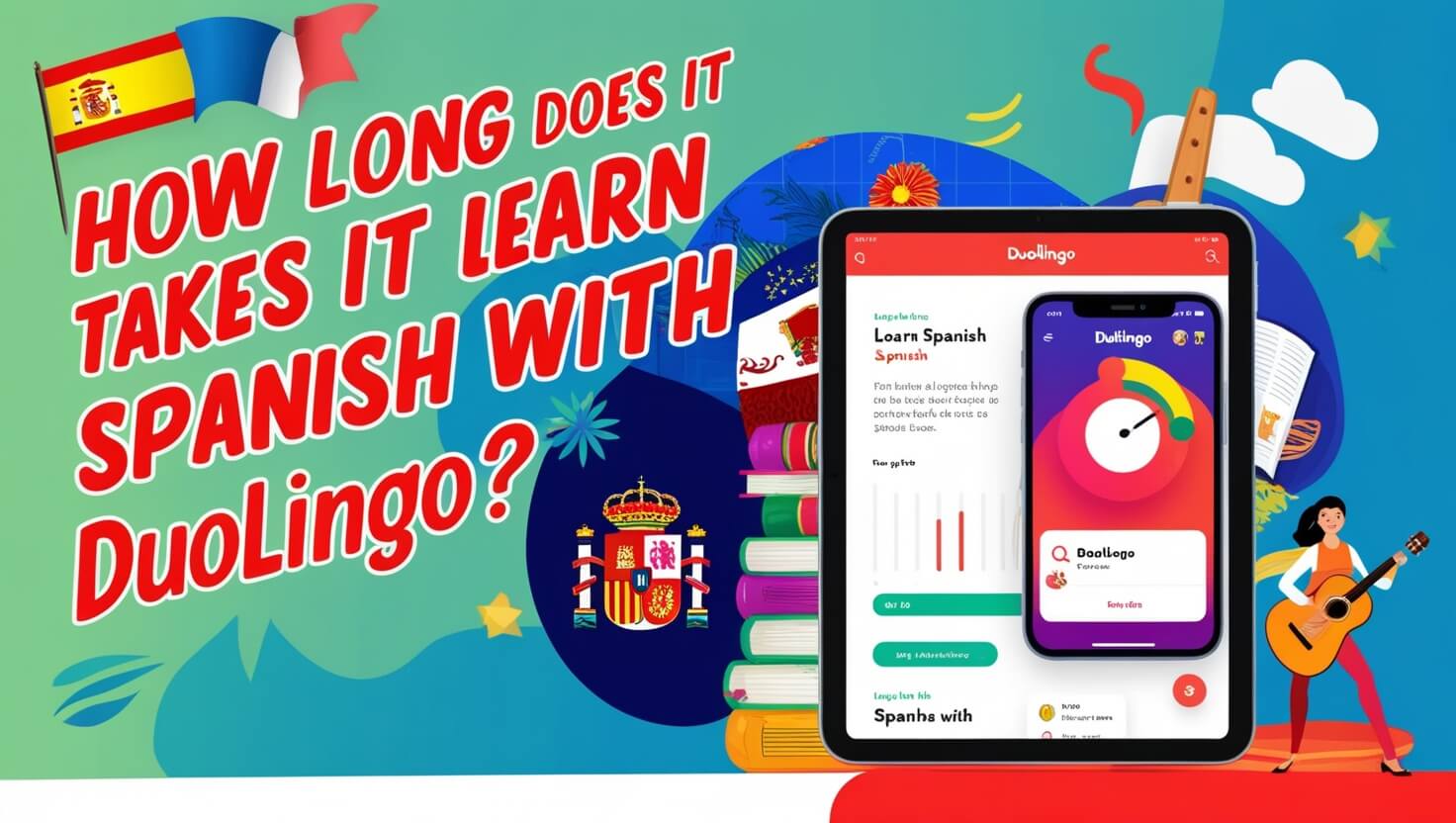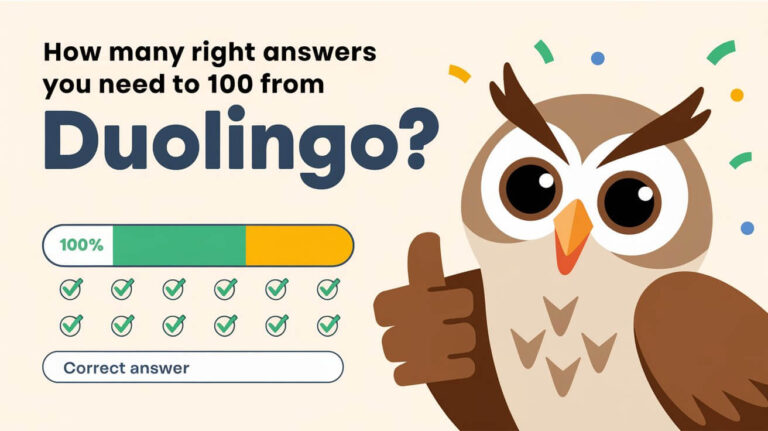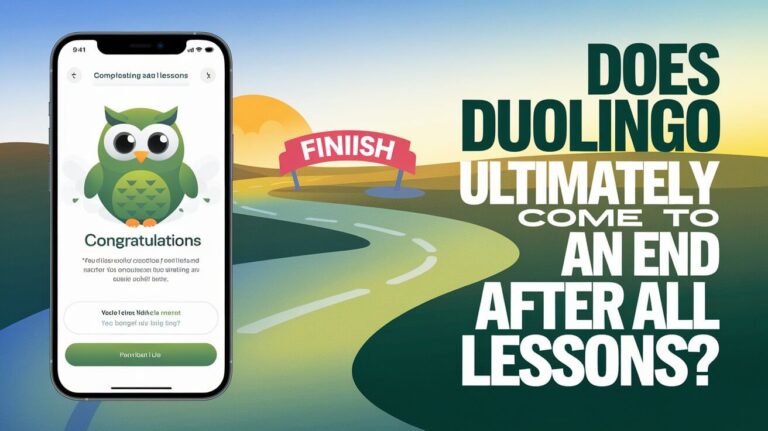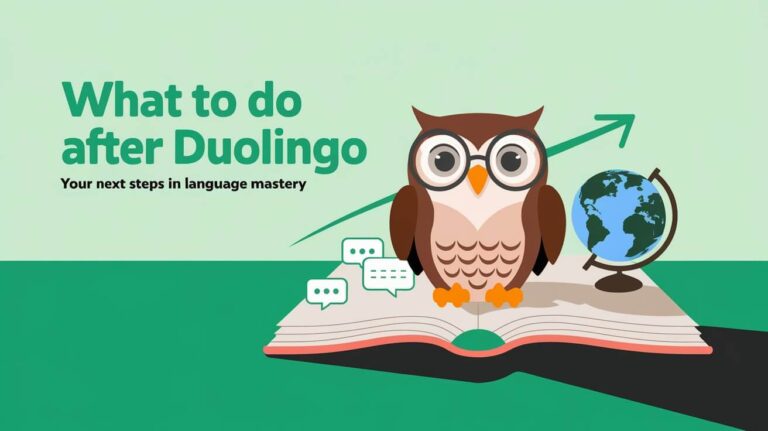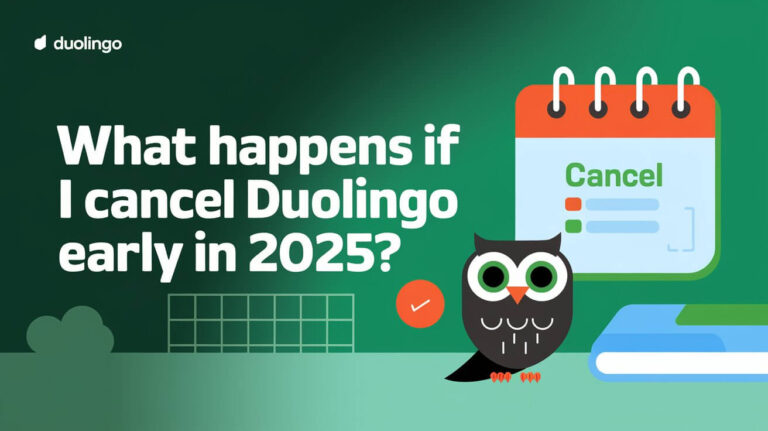Learning a new language is an exciting journey, and Spanish tops many people’s lists. With its widespread use and rich cultural heritage, Spanish attracts learners worldwide. Enter Duolingo, the popular language learning app that’s revolutionized how we approach language studies. But a burning question remains: how long does it take to learn Spanish with Duolingo?
The time to learn Spanish with Duolingo varies widely, ranging from a few months to over a year. Your progress depends on factors like study consistency, prior language experience, and personal learning goals. This post digs into the details of Duolingo’s Spanish course, user experiences, and tips to speed up your learning.
Understanding Duolingo’s Spanish Course Structure
Duolingo breaks down Spanish learning into manageable chunks. Let’s look at how the course is set up.
Sections and Units in Duolingo Spanish
The Spanish course on Duolingo is split into eight main sections. Each section builds on the last, taking you from basic greetings to complex conversations. Within these sections, you’ll find units focusing on specific topics or grammar points.
Lessons and Skills Covered
Units are made up of lessons. Most units have about five lessons each. These bite-sized sessions help you learn new words, practice grammar, and improve your pronunciation. The skills range from simple vocabulary to tricky verb tenses.
CEFR Alignment in Duolingo’s Spanish Course
Duolingo aligns its content with the Common European Framework of Reference for Languages (CEFR). This means you can track your progress against international standards. The course covers levels from A1 (beginner) to B2 (upper intermediate).
Factors Affecting Spanish Learning Time with Duolingo
Your Spanish learning journey is unique. Several factors influence how quickly you’ll progress.
Prior Language Learning Experience
If you’ve learned another language before, especially one related to Spanish, you might pick things up faster. Your brain is already wired for language learning, giving you a head start.
Consistency and Study Habits
Regular practice is key. Studying Spanish on Duolingo for 15 minutes daily will yield better results than cramming for hours once a week. Consistency helps build habits and reinforces learning.
Individual Learning Pace
Everyone learns differently. Some grasp concepts quickly, while others need more time to absorb information. Your personal learning style and speed play a big role in how fast you progress.
Spanish Proficiency Goals
Your end goal affects your learning time. Aiming to order food in Spanish on your next vacation? That’ll take less time than preparing for a job interview in Spanish.
Duolingo’s Estimates for Spanish Learning Time
Duolingo offers some guidance on how long it might take to reach certain milestones.
Completing the Spanish Course: Duolingo’s Perspective
According to Duolingo, finishing the entire Spanish course can take anywhere from a few months to over a year. This estimate assumes regular practice and completion of all levels.
Time to Reach Different CEFR Levels
Duolingo suggests that consistent study for a year could get you to the end of A2 level content. This means you’d be able to handle basic communication in Spanish.
Comparing Duolingo Hours to Traditional Language Education
An independent study found that 34 hours of Duolingo is comparable to a full university semester of language education. This gives you an idea of the app’s efficiency compared to traditional methods.
Real User Experiences: Learning Spanish with Duolingo
Let’s hear from some Duolingo users about their Spanish learning journeys.
Beginner Success Stories
Many beginners report noticeable progress within the first month. They often surprise themselves by recognizing Spanish words in real-life situations or understanding simple phrases.
Intermediate Learner Progress
Intermediate learners often find that Duolingo helps them fill in gaps in their knowledge. They report improved grammar skills and expanded vocabulary after a few months of consistent use.
Advanced Learner Insights
Advanced learners use Duolingo to maintain their Spanish skills. They often combine the app with other resources for a well-rounded approach to language mastery.
Measuring Progress in Duolingo Spanish
Duolingo offers several ways to track your Spanish learning progress.
XP and Crown System Explained
Duolingo uses XP (experience points) and crowns to measure progress. You earn XP for completing lessons and crowns for mastering skills. This gamified approach keeps learning fun and motivating.
Duolingo’s Assessment Tools
The app includes placement tests and checkpoint quizzes. These tools help you gauge your Spanish level and identify areas for improvement.
Self-Evaluation Techniques for Spanish Learners
Beyond Duolingo’s tools, you can assess your progress by trying to read Spanish articles, watch Spanish shows, or have conversations with native speakers.
Supplementing Duolingo for Faster Spanish Learning
While Duolingo is a great tool, combining it with other resources can speed up your learning.
Combining Duolingo with Other Resources
Try pairing Duolingo with Spanish podcasts, YouTube videos, or language exchange apps. This multi-pronged approach exposes you to different aspects of the language.
Immersion Techniques to Accelerate Learning
Surround yourself with Spanish. Change your phone’s language settings, listen to Spanish music, or watch Spanish movies with subtitles. These immersion tactics can boost your learning speed.
Speaking Practice Beyond the App
Duolingo is great for reading and writing, but speaking practice is crucial. Join Spanish conversation groups or find a language exchange partner to improve your speaking skills.
Setting Realistic Expectations for Spanish Fluency with Duolingo
It’s important to have clear, achievable goals when learning Spanish with Duolingo.
What Does “Fluency” Mean in the Context of Duolingo?
Fluency is a broad term. In Duolingo’s context, it often means reaching a B2 level, where you can converse comfortably on various topics.
Short-term vs. Long-term Spanish Learning Goals
Set both short-term goals (like learning food vocabulary) and long-term goals (like holding a 30-minute conversation in Spanish). This approach keeps you motivated and moving forward.
Continuing Spanish Education After Completing Duolingo
Duolingo is a great starting point, but language learning is a lifelong journey. Plan to continue your Spanish education through other means after finishing the Duolingo course.
Tips to Optimize Your Spanish Learning Time on Duolingo
Make the most of your Duolingo Spanish learning with these tips.
Creating an Effective Study Schedule
Set aside specific times for Duolingo practice. Even 15 minutes a day can lead to significant progress over time.
Maximizing Feature Usage in the App
Explore all of Duolingo’s features. Use the Stories feature for reading practice, join a Club for motivation, and try the Podcasts for listening skills.
Overcoming Common Learning Plateaus
Hit a wall in your learning? Try focusing on a different skill, or take a short break and return with fresh eyes. Varying your approach can help overcome plateaus.
Comparing Duolingo Spanish Learning Time to Other Methods
How does Duolingo stack up against other ways of learning Spanish?
Duolingo vs. Traditional Classroom Learning
Duolingo offers flexibility that traditional classrooms can’t match. However, classrooms provide structured learning and immediate feedback from teachers.
Duolingo vs. Other Language Learning Apps
Each app has its strengths. Duolingo excels in gamification and user engagement, while others might offer more in-depth grammar explanations or speaking practice.
Combining Methods for Optimal Results
The best approach often involves a mix of methods. Combine Duolingo with textbooks, conversation practice, and immersion for the best results.
Conclusion
Learning Spanish with Duolingo is a journey that’s different for everyone. While it might take a few months to over a year to complete the course, your real progress depends on your goals, consistency, and how you supplement your learning.
Remember, language learning is a marathon, not a sprint. Enjoy the process, celebrate small victories, and keep practicing. With dedication and the right approach, you’ll be speaking Spanish before you know it. ¡Buena suerte! (Good luck!)

